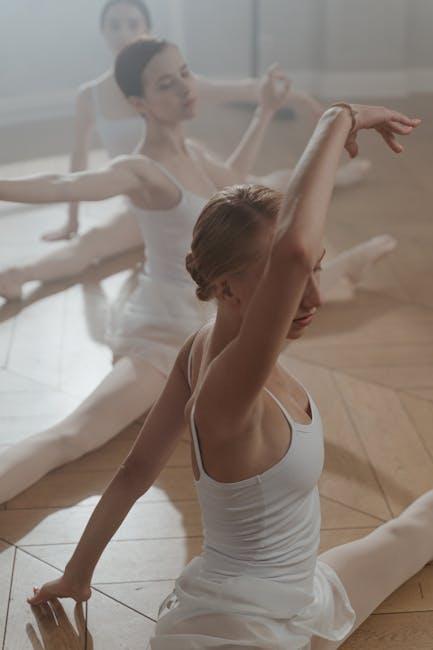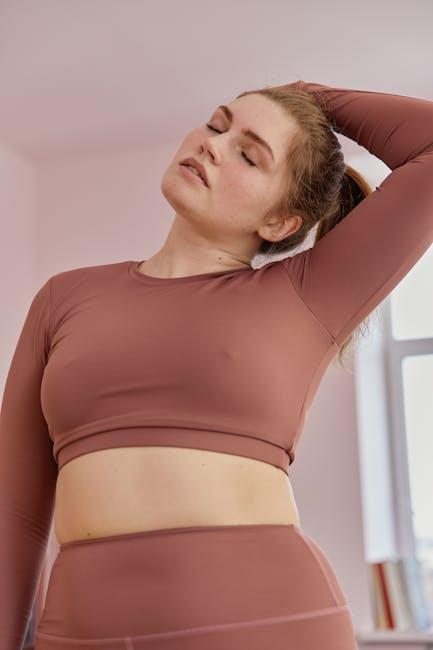In our fast-paced world, where daily routines often leave little room for self-care, maintaining physical flexibility can seem like a daunting challenge. Yet, flexibility is a cornerstone of overall health, playing a crucial role in preventing injuries, reducing muscle soreness, and enhancing our ability to perform everyday activities with ease. If you’ve ever felt stiff reaching for something on a high shelf or experienced discomfort after a day at your desk, you’re not alone. Many of us face these challenges, but the good news is that improving flexibility is within your reach, regardless of your age or fitness level. In this article, we’ll explore the transformative power of stretching, offering practical, step-by-step guidance to help you integrate flexibility exercises into your daily routine. With empathy and encouragement, we aim to support you on this journey towards a more flexible, healthier you.
Understanding Your Bodys Flexibility Needs
Flexibility is a vital aspect of physical health, often overlooked in our daily routines. It plays a crucial role in maintaining a balanced body, enhancing performance, and preventing injuries. Understanding what your body needs in terms of flexibility can be empowering and transformative. Each body is unique, and recognizing its specific requirements is the first step towards achieving your flexibility goals.
- Listen to Your Body: Pay attention to what your body is telling you. Discomfort can be a sign that a particular muscle group is tight or needs more attention.
- Assess Your Lifestyle: Consider how your daily activities affect your flexibility. Sedentary lifestyles often lead to tight muscles, while more active routines might require targeted stretching.
- Identify Key Areas: Common areas that benefit from flexibility training include the hamstrings, hips, shoulders, and lower back.
Customizing your stretching routine to fit your body’s needs is essential. Consider creating a simple table to track your progress and highlight areas that require more focus:
| Muscle Group | Current Flexibility | Goal |
|---|---|---|
| Hamstrings | Tight | Moderate |
| Hips | Moderate | Flexible |
| Shoulders | Flexible | Maintain |
Remember, progress takes time and patience. By tuning into your body’s needs and adjusting your routine accordingly, you can improve your flexibility effectively and safely.

Choosing the Right Stretching Techniques for You
When it comes to enhancing your flexibility through stretching, it’s crucial to select techniques that align with your personal needs and goals. Static stretching and dynamic stretching are two primary categories, each serving different purposes. Static stretching involves holding a stretch for a set period, typically 15 to 60 seconds, and is ideal for increasing overall flexibility and calming the muscles post-exercise. On the other hand, dynamic stretching incorporates movement, making it perfect for warming up and improving functional flexibility.
To choose the most effective stretching techniques, consider the following factors:
- Activity Type: If you’re preparing for a high-intensity workout, dynamic stretches like leg swings or arm circles can help activate muscles.
- Time of Day: Morning stretches can include dynamic movements to energize, while evening routines might focus on static stretches to relax and unwind.
- Personal Goals: If your aim is to enhance range of motion, static stretching post-exercise can be beneficial. For improving athletic performance, incorporate dynamic stretches into your warm-up.
Here’s a simple comparison to help you decide:
| Stretch Type | Best For | Example |
|---|---|---|
| Static | Flexibility & Relaxation | Hamstring Stretch |
| Dynamic | Warm-Up & Activation | Arm Circles |

Creating a Personalized Stretching Routine
Embarking on the journey to improve your flexibility begins with crafting a stretching routine tailored to your individual needs. This personalized approach not only respects your current physical condition but also aligns with your flexibility goals. Here’s how to build a routine that fits you perfectly:
- Assess Your Current Flexibility: Start by identifying areas where you feel tension or limited range of motion. This could be your hamstrings, shoulders, or back. Understanding these areas will help you focus your routine on what matters most.
- Set Clear Goals: Decide what you want to achieve. Whether it’s touching your toes, improving your posture, or simply feeling more relaxed, having clear goals will keep you motivated.
- Choose the Right Stretches: Incorporate a mix of dynamic and static stretches. Dynamic stretches help warm up the muscles, while static stretches improve flexibility over time.
- Consider Your Schedule: Determine how much time you can realistically dedicate to stretching each day. Even 10-15 minutes daily can make a significant difference.
| Stretch | Focus Area | Duration |
|---|---|---|
| Cat-Cow Stretch | Spine | 1-2 minutes |
| Standing Forward Bend | Hamstrings | 30 seconds |
| Shoulder Circles | Shoulders | 1 minute |
Remember, consistency is key. As you progress, regularly reassess your flexibility levels and adjust your routine accordingly. This adaptability will ensure that your stretching practice continues to meet your evolving needs, leading to sustained improvement and enhanced well-being.

Incorporating Mindfulness to Enhance Flexibility
To truly unlock your body’s potential, integrating mindfulness into your stretching routine can be transformative. When you focus on the present moment, you enhance your body’s natural ability to become more flexible and resilient. Begin by tuning into your breath, allowing each inhale and exhale to guide your movements. This conscious breathing not only increases oxygen flow to your muscles but also helps release tension.
- Be Present: During each stretch, concentrate on the sensations in your body. Feel the stretch deepen as you breathe out, and visualize your muscles lengthening.
- Set Intentions: Before starting, set a clear intention for your practice. Whether it’s to improve a specific area of flexibility or to simply enjoy the movement, having a purpose enhances your focus.
- Use Guided Imagery: Imagine your muscles as elastic bands gently stretching with ease. This visualization can help to reduce any mental barriers to flexibility.
| Mindful Practice | Benefit |
|---|---|
| Deep Breathing | Enhances relaxation and reduces tension |
| Body Scanning | Increases awareness of tight areas |
| Visualization | Boosts mental readiness and focus |
By consistently applying these mindfulness techniques, you’ll not only improve your physical flexibility but also cultivate a deeper connection with your body. Remember, flexibility is as much a mental state as it is a physical one.








































